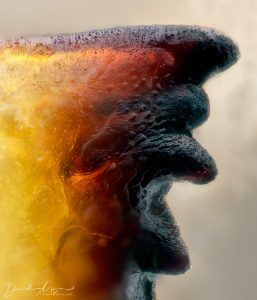 Termites belong to the Order Blattodea (Pronounced Blat-oh-dee-a) , which they share with the cockroaches, and they sit in the infraorder Isoptera (Pronounced Eye-sop-terra). Previoulsy, the termites (before nucleic acids took over taxonomy) had their own full order, but were later found to sit within the spread of the cockroaches. That name came form the Greek, Iso meaning equal and pteron, meaning wing. The name referred to the wings of the reproductive caste, which isn’t very helpful as most termites are plain workers that never get to grow wings. There are two pairs of wings, with the front pair the same size and shape as the hind pair. The name termite comes from the Latin word termes meaning woodworm (which probably covered some beetle larvae as well). See also here.
Termites belong to the Order Blattodea (Pronounced Blat-oh-dee-a) , which they share with the cockroaches, and they sit in the infraorder Isoptera (Pronounced Eye-sop-terra). Previoulsy, the termites (before nucleic acids took over taxonomy) had their own full order, but were later found to sit within the spread of the cockroaches. That name came form the Greek, Iso meaning equal and pteron, meaning wing. The name referred to the wings of the reproductive caste, which isn’t very helpful as most termites are plain workers that never get to grow wings. There are two pairs of wings, with the front pair the same size and shape as the hind pair. The name termite comes from the Latin word termes meaning woodworm (which probably covered some beetle larvae as well). See also here.
- Description:
 Termites are small, pale to whitish, soft-bodied social insects living in a nest or colony system. They all feed mostly on plant fibre (cellulose). The colony is divided into castes, which do different jobs and mostly also look a bit different. The most numerous worker caste is relatively undifferentiated and performs much of the colony work, there is a specialised soldier caste with head and jaw structures differentiated with stronger features and often mouthparts more suited to defence than feeding. The reproductive caste, known as alates (winged ones) are produced when nymphs mature to develop wings and a generally darker colouring. Metamorphosis is gradual (there is no pupal stage)
Termites are small, pale to whitish, soft-bodied social insects living in a nest or colony system. They all feed mostly on plant fibre (cellulose). The colony is divided into castes, which do different jobs and mostly also look a bit different. The most numerous worker caste is relatively undifferentiated and performs much of the colony work, there is a specialised soldier caste with head and jaw structures differentiated with stronger features and often mouthparts more suited to defence than feeding. The reproductive caste, known as alates (winged ones) are produced when nymphs mature to develop wings and a generally darker colouring. Metamorphosis is gradual (there is no pupal stage)- The head is rounded and eyes generally absent except in the reproductive caste (and rarely in soldiers), antennae are beaded (‘moniliform‘) with more than ten obvious beads, wings are also absent except in the reproductive caste. They all have strong chewing mouthparts and can broadly be separated by looking at the patterns of their tiny teeth (not like ours, more like saw teeth).

A close up of the jaw of Reticulitermes flavipes by David Mora del Pozo, pasiontermitas.com 
Female Coptotermes lacteus signalling for a mate. Near Walhalla, Victoria, on canvas. - The wings are deciduous, shed shortly afternuptial flight through breakage at a suture near point of attachment (hence de-alate), leaving small scales which persist. Termites are weak fliers, flights occur only under favourable conditions: nearly still air, high humidity and with falling barometric pressure indicating a likelihood of following rain. No constriction of the abdomen (as in ants, bees and wasps). Here’s a similar description at the University of Delaware
![]() Termites also behave in ways that makes them easy to identify. For a start, nearly every type live completely in the dark (except when building or when the winged ones are flying), so you usually only see them when something is broken or open. Once exposed, they will try to follow their scent trails home. If these are broken they just wander around looking lost or squeeze into any gap they can find.
Termites also behave in ways that makes them easy to identify. For a start, nearly every type live completely in the dark (except when building or when the winged ones are flying), so you usually only see them when something is broken or open. Once exposed, they will try to follow their scent trails home. If these are broken they just wander around looking lost or squeeze into any gap they can find.
 Most species of termites have what is called a soldier caste. These grow strong heads, often much darker than those of the other termites. Very often, these strong heads also have big jaws. If you can find some of these among you termites, it makes the job of identifying the species much easier. Soldiers may be rare, only a few percent of the population, so look carefully.
Most species of termites have what is called a soldier caste. These grow strong heads, often much darker than those of the other termites. Very often, these strong heads also have big jaws. If you can find some of these among you termites, it makes the job of identifying the species much easier. Soldiers may be rare, only a few percent of the population, so look carefully.
